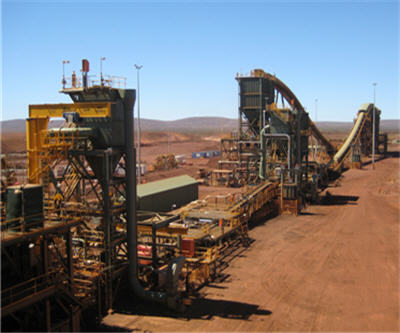
Benchmark iron ore gained slightly on Friday, with the steelmaking raw material notching up its first weekly gain in eight.
According to data from the The Steel Index, the import price of 62% iron ore fines at China’s Tianjin port rose to $94.50 per tonne on Friday, up $0.20 on the day.
Recent gains come on the back of rising steel and futures prices in Asia. The world’s most active steel contract, Shanghai rebar, jumped 1%, while iron ore futures and swaps traded in Singapore for July delivery jumped $0.75 to $95.25.
The iron ore price is up nearly 3% since last Friday when it was trading at its lowest level since September 2012, but the commodity remains some 30% below levels at the start of year.
The weakness in iron ore in 2014 is blamed on expectations of a glut on markets just as demand from China, responsible for two-thirds of the 1.2 billion tonne seaborne trade, cools.
But the one-fifth drop in value over just the last couple of months may have been overdone: Iron ore has not trade below $100 on a quarterly basis since 2009 and when prices stay below this level for long enough high cost mines, particularly those in China, become unprofitable leading to cuts in supply.
During the September 2012 slump down to $86.70, number two producer Rio Tinto estimated as much as 100 million tonnes output were taken off the table, which pushed prices back up.
Iron ore only traded below $100 a tonne for just over a fortnight during the last downcycle and ended that year north of $150. So far in 2014 iron ore has average $114.34 a tonne.
A complicating factor in 2014 may the popularity in China of using commodities – particularly iron ore and copper – as collateral for trade credit.
Stockpiles of imported iron ore at Chinese ports are at record highs above 110 million tonnes according to industry consultancy Steelhome, up more than 50% from this time last year.
Some estimates put the portion of iron ore inventories that is used as collateral for short term loans at 40%, but Beijing is cracking down on the practice as it tries to rein in the country’s vast shadow banking system and tackle excessive debts in the economy.
Beijing’s tightening of controls coupled with a weakening yuan – another deliberate move by authorities – are pushing these deals under water and much of that ore could find its way back onto the market creating a vicious circle.
Iron ore deals are also being targeted to reduce chronic overcapacity in China’s steel industry and in the process tackle polluting sintering plants and blast furnaces.